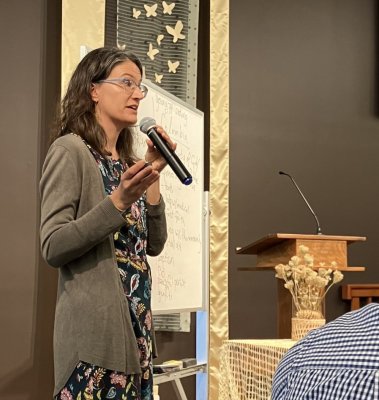Storytelling at 500 Years
By Elizabeth Miller, Director of the Institute for the Study of Global Anabaptism
2025 promises to be an extraordinary year of international gathering, as communities around the world commemorate 500 years of Anabaptism. Perhaps the most publicized of these events is Mennonite World Conference’s commemoration, to be hosted in Zurich in May 2025, but there are many more planned. South American Anabaptists will gather in Cusco, Peru in January, coinciding with the date of the first recorded baptism in Anabaptist history. Baptists and Anabaptists will meet in Amsterdam in June for the 20th Believers Church Conference. In July, Elizabethtown College in Pennsylvania will host a conference focused on global perspectives of early Anabaptism. These conferences are unique opportunities for church leaders and scholars to take advantage of this auspicious date for renewed reflection, study, and discernment for the future.
The reality is, however, that the majority of Anabaptists will not attend these larger international conferences. Instead, most are likely to observe the anniversary of 500 years of Anabaptism in their home congregations. Although international conferences allow for unique forms of exchange and connection, it seems particularly appropriate for a movement that grew out of home meetings and evangelism of neighbors to be recognized and commemorated among local worshipping communities.
Over the past six months, I have been delighted to receive numerous invitations from Mennonite congregations to speak about global Anabaptism. As the 500th anniversary approaches, these congregations are using their Sunday School and corporate worship spaces to reflect on the history of Anabaptism and their own community’s location within that tradition. I enter these conversations eagerly but also do so with a certain degree of caution.
Anniversaries and commemorations are tricky things, laden with unspoken expectations. Some may hope to find a “pure” form of faith that can be extracted from the past and applied to the present. Others may seek to wrestle openly with the internal contradictions inherent in any movement that spans five centuries. Perhaps some hope to see their own convictions justified. Still others may seek guidance for the future in their commemorations of the past.
The disparate expectations that underlie our commemorations, however, should not dissuade us from participating. This is especially true at a congregational level, where connection and relationship are the substrate for any reflection on 500 years of Anabaptism. Visiting congregations over the past year, my focus has been on expanding the circle of connection through storytelling. Each congregation knows its own story most intimately, which is as it should be, but no congregation can hold the entirety of Anabaptist faith within its experience.
When the history and experience of a Mennonite congregation in Indiana are illuminated by the honest testimony of Anabaptists in Nicaragua, Ethiopia, or Indonesia, for example, the meaning of Anabaptism and the possibilities for faithful living in the Indiana context expand. How those possibilities are eventually realized depends on many factors, of course, including a willingness to hold our own expectations lightly, an existing practice of communal discernment, and an attentiveness to the movements of the Holy Spirit.

In this year of commemorations, my most gratifying experience was fittingly at my home congregation, where I was invited to speak with our youth group about global Anabaptism. We connected our congregational life and practice with broader expressions of Anabaptism, before exploring the ways that youth in other places have claimed Anabaptism as the way in which they feel best equipped to follow Jesus in their context. My hope is that this year of commemoration will root us more deeply in the particularities of faithful living our own contexts, even as we seek connection with the ways that Anabaptist communities across 500 years and an abundance of cultures have also struggled with, testified to, and embodied their faith.




